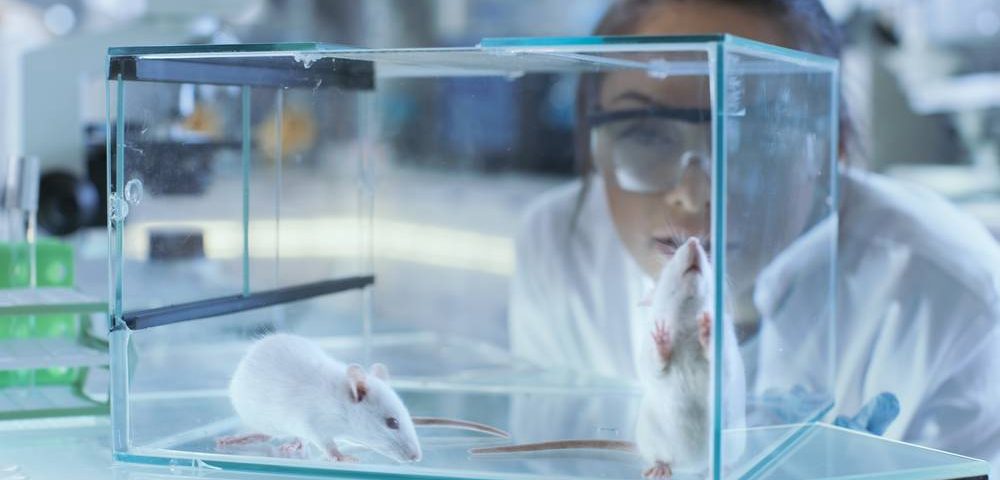Cells originally from the bone marrow migrate to the uterus and play an important role in pregnancy, a new study in mice suggests.
Titled “Adult bone marrow progenitors become decidual cells and contribute to embryo implantation and pregnancy,” the study was published in the journal PLOS Biology.
Cells in the bone marrow are best known for becoming blood cells and cells of the immune system. It is well-established that those cells play important roles in pregnancy. However, whether bone marrow-derived cells (BMDCs) play a non-immunological role — one not related to immunity — in pregnancy has not been well-understood.
To examine this, researchers first used fluorescent labels to track BMDCs in mouse models of pregnancies. They found that, in pregnant mice, BMDCs do indeed go to the uterus, and most of them express markers of blood and immune cells. About a fifth of these cells, however, looked more like decidual cells — the cells that are present in the lining of the uterus, called the endometrium, and help with fetal implantation and supporting the growing embryo(s).
From this finding, the researchers turned to a gene called Hoxa11. Abnormally low functioning of this gene has been implicated in a number of disorders of the female reproductive system, including endometriosis. Further, mice that are engineered to lack Hoxa11 can’t become pregnant. Mice that have been engineered to be only partially deficient in Hoxa11 can become pregnant, but have significantly higher rates of pregnancy losses than wild-type (healthy) mice.
What piqued the researchers’ curiosity was that Hoxa11 is found both in cells native to the uterus and in BMDCs. They wondered whether the presence of Hoxa11 in BMDCs might be able to compensate for a lack of it in uterus cells.
To test this idea, the researchers gave bone marrow transplants from wild-type mice to mice partly deficient in Hoxa11. As a control, they gave other partial Hoxa11-deficient mice bone marrow transplants from completely Hoxa11-deficient mice. Compared with the controls, the test mice had significantly more larger litters — an average of 8.2 vs. 4.0 pups/litter. Their litter size was comparable to the average litter size of wild-type mice (8.3 pups/litter). Correspondingly, these mice also had higher implantation rates and lower rates of fetal resorption.
To test this idea, the researchers gave bone marrow transplants from wild-type mice to mice partly deficient in Hoxa11. Compared to partial Hoxa11-deficient mice that received a control treatment (bone marrow transplant from a completely Hoxa11-deficient mouse), these mice had significantly higher larger litters (average of 8.2 vs. 4.0 pups/litter), such that they were comparable to the average litter size of wild-type mice (8.3 pups/litter). Correspondingly, these mice also had higher implantation rates and lower rates of fetal resorption.
These findings suggest that bone marrow cells can indeed help to compensate for at least some genetic defects in uterine cells.
“Although it remains to be established to what extent these findings in the mouse translate to the situation in humans, our data raise the prospect that BMDCs dysfunction may contribute to implantation failure or pregnancy loss in women,” the study concluded.
“The common thinking about bone marrow in relation to pregnancy is that it is the origin of many immune cells which play important roles at the maternal-fetal interface to promote successful pregnancy,” the researchers said in a press release. “This study shows for the first time that adult bone marrow is also a source of non-immune cells in the pregnant uterus. We demonstrate that bone marrow progenitors are mobilized to the circulation in pregnancy and home to the uterus where they become decidual cells and have profound effects on gene expression in the uterine environment and ultimately help prevent pregnancy loss.”
The researchers recommend that further work be done to investigate the role of these cells in human implantation and pregnancy.
“We are currently translating these findings into humans to better understand the role that these cells play in recurrent implantation failure and recurrent pregnancy loss, two conditions that are unexplained in the majority of cases and have no effective treatment,” they said. “The findings of this study open exciting new avenues for research into the cause of these conditions as well as developing new treatments.”

